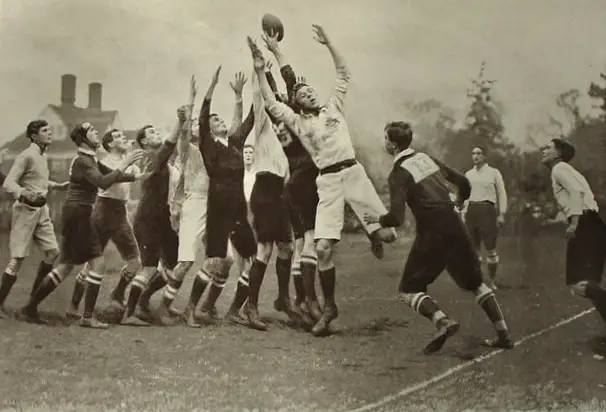The story of sports is often one of evolution and divergence, and this is particularly evident in the case of soccer and rugby. Tracing back to a common ancestor – a medieval variety of ‘football’ played in England – these two globally popular sports eventually carved out their own path. Join us as we explore how rugby played a crucial role in the creation and development of modern soccer.
The Formation of the Sports
Medieval football was vastly different from the organized, rule-bound games of today. It was a chaotic community event, with minimal rules, aggressive play, and a ball made from some sort of animal bladder (we’re glad this tradition ended). However, by the 19th century, English schools began adopting a rudimentary form of football, each altering the rules to suit their preferences.
Rugby School, located in Warwickshire, England, became known for its unique version of the game. Here, players were allowed to pick up the ball and run with it – something that went against the traditions of football, as the name would suggest. This distinction was key to the eventual split of football and rugby into two separate sports.
Fragmentation Begins
In 1863, the dispute about the deviations of soccer culminated in a meeting in London. It aimed to unify the various rules of soccer and led to the formation of the Football Association (FA). The central debate was whether ‘hacking,’ kicking an opponent in the shins (ouch), and carrying the ball should be allowed. Proponents of the rugby style favored these elements, but they were outnumbered. The FA’s rules, which prohibited these practices, became the foundation of modern soccer.
Those who supported the rugby style established the Rugby Football Union in 1871, drawing a line in the sand and formalizing the division which would lead to modern soccer and modern rugby. This split was reflected in the rules, playing style, and ethos. Soccer, focusing on kicking, evolved into a game emphasizing strategy, precision, and teamwork. Rugby, retaining its physical nature, developed complex rules about tackling and ball handling.
The impact of this split is significant. Soccer, with its simpler rules and less physical contact, became widely accessible and rapidly spread worldwide. Rugby, while also popular, remained more closely tied to the British Isles and the Commonwealth, emphasizing strength and endurance. However, today rugby is also incredibly popular in places like New Zealand and South Africa, where rugby news is more important than soccer news!
Conclusion
From medieval free-for-alls, English schools, to a London meeting over 150 years ago, that’s the story of how football and rugby became different games. Both sports have since thrived, each carving out a unique place in the world of athletics, while sharing a common history that underscores their interconnected past.




